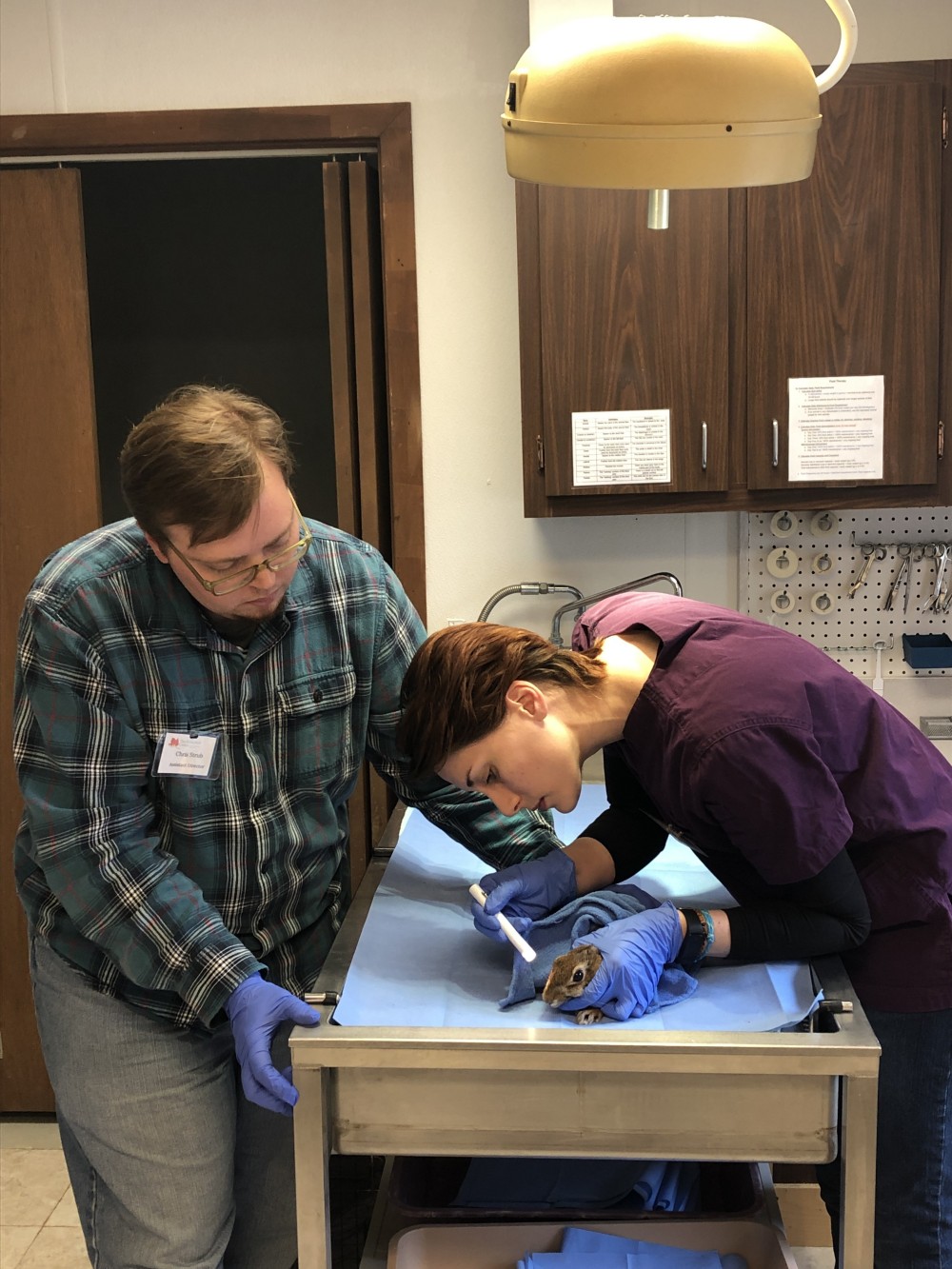By Rebecca Michelin, Director of Wildlife Rehabilitation
 With “baby season” for most species beginning in early spring, juveniles should be mostly self-sufficient by the time the fall and winter rolls around, and be able to sustain themselves through the colder months or to make a long migration south. As they learn to navigate the world without parental support and guidance, the first fall and winter can be brutal on young animals. [pullquote]The winter months are the time of year when we see some of the most challenging cases at the Wildlife Clinic, and many times they are a result of young, inexperienced animals who are struggling to figure things out. [/pullquote]
With “baby season” for most species beginning in early spring, juveniles should be mostly self-sufficient by the time the fall and winter rolls around, and be able to sustain themselves through the colder months or to make a long migration south. As they learn to navigate the world without parental support and guidance, the first fall and winter can be brutal on young animals. [pullquote]The winter months are the time of year when we see some of the most challenging cases at the Wildlife Clinic, and many times they are a result of young, inexperienced animals who are struggling to figure things out. [/pullquote]
Juvenile predatory birds, like hawks and owls, are common clinic patients as young birds become weak and emaciated if they struggle to feed themselves with their inexpert hunting skills. Prey species like mice and voles are more active during the warmer parts of the day in winter, so predators are more likely to be hunting during those times. In the winter months, rush hour commutes take place during twilight or after dark, reducing visibility and increasing chances of vehicle collisions with wildlife; many raptors rely on carion when their hunts are unsuccessful, and they are attracted to roadkill for an easy meal which makes them more susceptible to being hit by passing cars.
However, a bird of prey on the ground may not necessarily need help, as it is normal for these birds to remain motionless in one spot while resting, digesting a meal, or watching for prey. A hawk or owl on the ground could be injured, or he may have just caught some prey, or have just eaten a large meal and need to rest before flying away.
If you see a bird of prey on the ground or on a low perch, slowly approach the bird (no closer than 10 feet away) and make a note of how they respond as you get closer- do they hop or flutter away, or do they stand still? Look for signs of injury such as blood, a wing or leg held at an odd angle, or heavy breathing. If no signs of injury are visible, simply monitor the bird from a distance. If you see any signs that the bird is sick or hurt, if the bird does not respond at all to your presence, or if the bird does not fly away after 1-2 hours, contact a wildlife rehabilitator immediately for further advice.
While it is never advisable to offer food to injured wild animals, it is especially critical not to feed animals that are underweight or starving. When an animal has gone without food for a long time, their digestive system slows down, their stomach capacity shrinks, and they are unable to process food. Once they reach this point, they need professional help to slowly reintroduce food in a controlled way, or it can be fatal. You can’t tell if an animal has entered starvation mode just by looking at them, so the safest option is to bring them to a rehabilitator for a proper assessment.
Have a question about wildlife?. Questions can be sent by email to [email protected]. For wildlife emergencies, call the clinic hotline at 215-482-7300 option x2.
